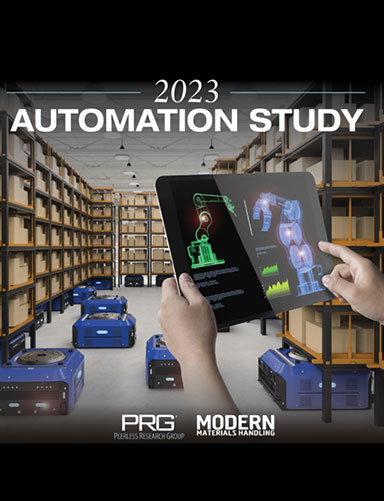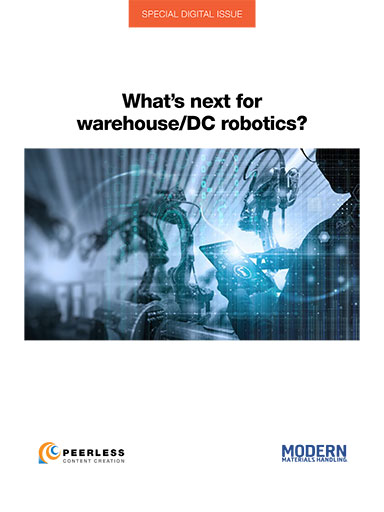Capitalizing on the IoT with Visibility and Intelligence

Mobile devices, cloud technology, big Data, The Internet of Things (IoT) will all help to revolutionize business as we know it.
On any given day, each moment matters to someone, somewhere.
From a retail manager responsible for asset tracking and inventory control to a clinician charged with ensuring accurate patient identification and medical records, enterprises have the opportunity to positively impact their customer and employee experiences - and bottom line.
We live in a connected world and technology is embedded in everything we do, and the Internet of Things (IoT) momentum is reaching critical mass. With cloud technology, organizations have access to their devices from any location for remote monitoring, management and data capture. While accessibility to devices and data enables productivity and quality improvements, the real potential of the IoT may not be realized without a broader set of enabling technologies and insight.
It is these enabling technologies that allow enterprises to go beyond the incremental productivity and quality improvements to gain actionable intelligence on assets, people and transactions across their organization. This enhanced business insight is what enables more-informed decision making and improved performance. Put simply, Enterprise Asset Intelligence helps businesses yield maximum value from IoT solutions.
IoT: Opportunities and Challenges Opportunities
Cloud and mobile technologies are increasingly available and affordable, and the IoT specifically, presents businesses with a multitude of opportunities. By leveraging the IoT, organizations can transform their business models to drive innovation and strategic advantages, utilize advanced analytics to become more predictive and automated and deliver more personalized customer experiences. Additionally, organizations can gain enhanced insight into their business operations to increase efficiency, reduce costs and improve security and safety, among other things. Given the vast potential that the IoT brings, industry leaders are not hesitating to implement IoT solutions. In fact, many have already started to gain a competitive advantage with its use. However, without the proper set of enabling technologies, businesses may not be able to extract this value from the IoT. In order for businesses to gain real-time visibility into their assets, people and transactions and turn data into actionable intelligence, they need a portfolio of technologies, including:
Devices that are equipped for data sensing, tracking and capturing in order to manage assets, people and transactions.
Cloud technology that provides the interconnection of smart devices and the hosting of enterprise applications.
Mobile technology that is extending business processes and information accessibility throughout the workforce.
- Big Data solutions that provide the advanced analytics necessary to gain actionable business insight from the raw data that is generated by these devices.

Challenges
Though the IoT stands to deliver various benefits, it also presents challenges. And while the momentum doesn’t seem to be slowing down anytime soon, there are factors that should be taken into account when making a business decision to adopt an IoT solution. Among the main challenges faced when deploying IoT solutions are:
Complexity
Device management
Connecting legacy devices
Data analytics
- Security standards
Regarding complexity, an IoT deployment has various moving parts. Between planning, integrating and testing the ecosystem, organizations have their work cut out for them. Specifying and connecting devices to the cloud can often be challenging, because device manufacturers typically use protocols and firmware for particular devices. This challenge is often a barrier to success adding risk and cost.
As it pertains to the connectivity of legacy devices, Forrester Research suggests that there is no standard to integration across IoT devices, applications and services. And while many devices are capable of connecting to Wi-Fi® and similar networks, a significant amount of devices are still Internet unaware, relying on basic LAN connectivity. In order to connect legacy devices to an IoT system and cloud technology, businesses will need to upgrade and/or replace their networking capabilities. As the number of devices grow, various types of formats, information sources, etc., can make it hard to manage all of them while in sync with one another, thus generally requiring a set of proprietary tools. Not to mention, many applications can only consume specific data from the field and support only specific process needs. The results fall short of end-to-end visibility into the data.
Moreover, as the number of connected devices continues to dramatically increase, so does the amount of available data. Two issues that are often presented by this phenomena include: data sets increasing in volume, velocity and variety, which make it difficult to process with standard database management systems, and the disjointed data silos in which much of this data sits - making it inaccessible across the enterprise.
Security also becomes an issue when physical assets are converted to digital and thus, susceptible to cyber attacks. The security of the device’s data is also an issue when dealing with devices that are Internet aware.
Though the aforementioned are just a few of the major challenges, successful IoT deployment requires solid connectivity, simple scalability and collaboration at every point. Connected devices don’t yield intelligence by simply producing more raw data. Insight must be gained through the interpretation of the data. But to obtain real value, end-to-end solutions need to be delivered that address the challenges of implementing IoT technologies.
Enterprise Asset Intelligence Enables Businesses to Capitalize on the IoT
Once IoT deployment challenges are evaluated and met, organizations need to execute their strategy to reach Enterprise Asset Intelligence. Obtaining intelligence is about transforming an organization into a predictive and automated enterprise - which is a new way of doing business that drives innovation and revenue.
However, when it comes to allowing trusted, automated decision making, the intricacy lies in compiling intelligence, enabling the technologies to work together, defining processes and implementing workflow and security. Enterprise Asset Intelligence then enables machine-to machine interactions that don’t require human intervention, rather devices that act on signals in an automated manner. This automation is enabled by processed data with advanced analytics, which is transformed into predictive algorithms and programmed automated systems.
Enterprise Asset Intelligence provides the visibility organizations need to leverage the IoT, but beyond that, it provides enterprises the business insight they need to be innovative and earn their competitive advantage. Without this enhanced knowledge, enterprises have endless amounts of data and no sound interpretation and insight into how to use it to transform their business.
Five Essentials for Deploying IoT Solutions
When building an IoT organization, it’s critical that the system supports both legacy and new smart devices. Further, it should provide support for multiple connectivity options (i.e., wired, wireless, etc.). IoT solutions should also have centralized and remote device management to allow for day-to-day provisioning, device setup and maintenance.
To support application connectivity, the system should offer consistent application programming interfaces across a wide range of devices, while affording easy scalability and connectivity to the data center. Once an IoT solution is in place, it needs to be capable of comprehending advanced analytics in order to process Big Data. Business intelligence, enterprise resource planning and other applications enrich data collected, which ultimately yields insights, as well as predict outcomes and actions.
Conclusion
At the end of the day, the IoT enables a transformative business opportunity. However, businesses that don’t navigate the complexities and take advantage of the technology won’t be able to compete. Businesses that leverage IoT technologies and data in such a way that supports strategic and innovative business models, advanced analytics and better customer service are truly raising the bar for performance.
Businesses need to partner with a company that has the technology, knowledge and experience to address the challenges in solution deployment and management. Zebra and its technologies enable Enterprise Asset Intelligence, which addresses the critical challenges enabling businesses to realize the competitive advantages afforded by the IoT.
Article Topics
Zebra Technologies News & Resources
Data Capture: Bar coding’s new companions Zebra Technologies introduces wearable computers Data Capture: Bar coding’s new friends Retail distribution closes in on the customer Enhance Your 3PL Operations in 2024 with the Latest Technology Solutions Automatic data capture (ADC): Accelerating the process Van Meter: Saving space while increasing throughput More Zebra TechnologiesLatest in Technology
Spotlight Startup: Cart.com is Reimagining Logistics Walmart and Swisslog Expand Partnership with New Texas Facility Taking Stock of Today’s Robotics Market and What the Future Holds Biden Gives Samsung $6.4 Billion For Texas Semiconductor Plants Apple Overtaken as World’s Largest Phone Seller Walmart Unleashes Autonomous Lift Trucks at Four High-Tech DCs Talking Supply Chain: Procurement and the AI revolution More Technology














